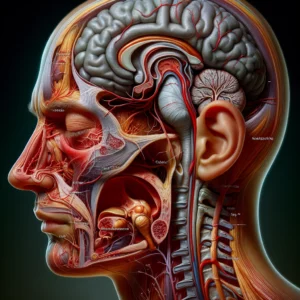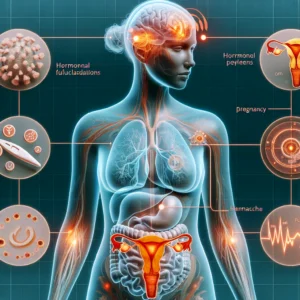Comprehensive Insights into Headache Origins and Proven Management Strategies
Headaches are a prevalent health concern affecting millions of people worldwide, significantly disrupting daily functions and diminishing quality of life. These painful episodes can manifest in various forms, each with distinct triggers, symptoms, and underlying causes. Understanding the different types of headaches is essential for effective treatment and management. This knowledge not only empowers individuals to identify their specific headache types but also allows for a personalized approach to treatment, ensuring that they can effectively cope with this common yet disruptive health issue.
Whether you face sporadic headaches or suffer from chronic pain, identifying the root causes is vital for determining appropriate treatments and making beneficial lifestyle adjustments. As you explore the complexity of headache management, consider a variety of treatment modalities, including both conventional and alternative therapies. Methods like balanced acupuncture, neurological acupuncture, and manual therapy can effectively address underlying issues, allowing you to regain control over your health and well-being, and ultimately improving your quality of life.
By investigating these diverse treatment options, you can embark on a holistic journey that seeks to not only alleviate headaches but also enhance your overall health and wellness.
Key Strategies for Successful Headache Management
- Tension headaches are the most commonly experienced type, often described as a constant band-like pressure around the head, which typically worsens during stress.
- Migraine headaches are characterized by intense, throbbing pain, often accompanied by nausea, vomiting, and heightened sensitivity to light and sound, severely impacting daily activities.
- Cluster headaches are infamous for their extreme pain, occurring in cycles and usually centered around one eye, making them some of the most painful headache types.
- Sinus headaches result from sinusitis, causing pressure and discomfort in the forehead, cheeks, and nasal areas, often exacerbated by allergies or infections.
- Hormonal headaches are common in women and are linked to hormonal changes that can occur during menstruation, pregnancy, or menopause, requiring specific management strategies.
 In-Depth Analysis of Tension Headaches and Their Triggers
In-Depth Analysis of Tension Headaches and Their Triggers
Identifying Common Patterns and Triggers Associated with Tension Headaches
Reflecting on your personal experiences can help reveal specific patterns that trigger tension headaches. Factors such as extended periods of desk work, emotional stress, and poor ergonomic setups can significantly contribute to their onset. Recognizing these triggers is crucial for preventing future headaches and maintaining overall well-being. Common causes include workplace stress, insufficient sleep, and dehydration, all of which can amplify discomfort. Keeping a detailed headache diary can aid in tracking the timing and potential causes of these headaches, enabling you to take proactive measures to mitigate their impact on your daily life.
Adopting a Holistic Strategy for Effective Relief from Tension Headaches
A comprehensive, multifaceted approach is often beneficial for successfully alleviating tension headaches. Integrating therapies such as balanced acupuncture can restore energy flow throughout your body by targeting specific acupoints that may contribute to muscle tightness and stress. Moreover, incorporating relaxation techniques, such as deep breathing exercises or yoga, can provide significant relief from tension while enhancing overall wellness. By addressing both physical and emotional stressors through a holistic lens, you can effectively reduce the frequency and intensity of tension headaches, ultimately improving your quality of life.
Boosting Relief with Neurological Acupuncture and Manual Therapy Techniques
Neurological acupuncture can further enhance your pain relief efforts by focusing on the role of the nervous system in pain perception. This specialized therapeutic technique targets the pathways involved in headache development, potentially altering your brain’s responses to pain signals. When combined with manual therapy techniques, such as massage or myofascial release, you may find substantial relief from the tension that exacerbates your headaches. Together, these therapies can create a synergistic effect, alleviating pain while promoting lasting relaxation and improved overall well-being.
 Comprehensive Guide to Understanding and Managing Migraine Headaches
Comprehensive Guide to Understanding and Managing Migraine Headaches
Migraines are far more than simple headaches; they are complex neurological phenomena that can incapacitate individuals for hours or even days. Characterized by severe, throbbing pain typically localized to one side of the head, migraines can also present with debilitating symptoms such as nausea, vomiting, and increased sensitivity to both light and sound. Various triggers, including certain foods, hormonal fluctuations, and environmental factors, can initiate these distressing episodes, highlighting the need to recognize and manage these triggers for effective treatment.
Successful migraine management typically involves a multifaceted approach. While medications can provide immediate relief during an attack, integrating therapies like acupuncture can significantly reduce the frequency and severity of future migraine episodes. Neurological acupuncture specifically targets the pain pathways associated with migraines, potentially altering your brain’s response to pain signals and interrupting the cycle of recurrent attacks.
When coupled with manual therapy techniques that alleviate muscle tension and enhance blood circulation, you may discover a more holistic strategy for effectively managing migraine headaches, empowering you to reclaim your daily life from the debilitating grip of these episodes.
Unraveling Cluster Headaches: Insights into Patterns, Triggers, and Severity
| Metrics | Data |
|---|---|
| Prevalence | 1 in 1,000 adults |
| Age of onset | 20-40 years old |
| Duration of attacks | 15 minutes to 3 hours |
| Pain intensity | Severe, often described as the worst pain experienced |
| Frequency of attacks | 1 to 8 times a day |
Cluster headaches are considered some of the most excruciating types of headaches, often presenting as a burning or piercing pain that occurs in cyclical patterns or clusters. You may experience these debilitating attacks multiple times each day over several weeks or months, followed by periods of complete relief. The pain typically localizes around one eye or one side of the head and may be accompanied by additional symptoms such as nasal congestion or tearing, intensifying the distress of the experience.
Due to their severity, effective management of cluster headaches requires prompt intervention and strategies. While traditional medications may provide some relief, exploring alternative therapies like acupuncture can significantly reduce the frequency and intensity of these painful episodes. By stimulating specific points related to the trigeminal nerve—the primary nerve linked to headache pain—neurological acupuncture may help regulate your body’s pain response, potentially alleviating some of the burden associated with cluster headaches.
When combined with manual therapy techniques aimed at promoting relaxation and reducing stress levels, you may discover a more balanced and practical approach to managing these intense headache episodes, ultimately enhancing your overall quality of life.
 Conquering the Challenges Associated with Sinus Headaches
Conquering the Challenges Associated with Sinus Headaches
Sinus headaches typically arise when inflammation or infection in the sinus cavities leads to uncomfortable pressure and pain in the forehead, cheeks, and around the eyes. You may also experience these headaches alongside nasal congestion, facial tenderness, and even fever. Understanding the underlying causes of sinus headaches is essential for effective treatment, as they often stem from allergies or respiratory infections that can worsen symptoms, creating a cycle of discomfort.
A combined therapeutic approach can prove particularly effective in addressing sinus headaches comprehensively. Acupuncture has been shown to reduce inflammation and promote drainage within the sinuses, alleviating the pressure and discomfort associated with these headaches. Utilizing balanced acupuncture techniques specifically targets acupoints related to sinus health, while neurological acupuncture can address pain pathways that contribute to your discomfort.
Moreover, incorporating manual therapy can relieve tension in the neck and shoulders, which may further aggravate sinus pressure. This comprehensive strategy can yield substantial relief from the discomfort linked to sinus headaches, allowing you to breathe easier and enjoy a more comfortable daily experience.
 Investigating Hormone-Related Headaches and Their Management Techniques
Investigating Hormone-Related Headaches and Their Management Techniques
Exploring the Intricate Relationship Between Hormones and Headache Patterns
Understanding the complex interplay between hormones and headache occurrences can empower you to take proactive steps in managing these specific headache types. Hormonal fluctuations, particularly in women, often trigger painful headaches, frequently coinciding with menstrual cycles, pregnancy, or menopause. By identifying these patterns, you can better anticipate and prepare for potential headache episodes, allowing for more effective management strategies.
Utilizing Natural Remedies for Effective Hormone-Related Headache Relief
To alleviate hormone-related headaches, consider integrating therapies that focus on balancing your body’s energy and hormonal levels. Acupuncture has been found to help regulate hormonal fluctuations by stimulating specific acupoints that influence endocrine functions. Additionally, neurological acupuncture can enhance this approach by addressing the nervous system’s role in pain perception during hormonal shifts, providing a comprehensive treatment experience that targets the underlying causes of your discomfort.
Adopting a Holistic Approach for Managing Hormone-Related Headaches
When combined with manual therapy techniques designed to promote relaxation and alleviate stress, you may discover a more effective method for managing hormone-related headaches. This holistic approach can help you navigate the complexities of hormonal changes, equipping you with the tools necessary to reduce pain and enhance your overall quality of life, allowing you to thrive even amidst these fluctuations.
 Strategies for Breaking Free from Rebound Headaches
Strategies for Breaking Free from Rebound Headaches
Rebound headaches often arise from the overuse of pain relief medications, establishing a cycle of dependency that increases headache frequency. You may find yourself relying on over-the-counter pain relievers more often than intended, only to experience worsening headaches as the effectiveness of the medication declines. Recognizing this cyclical pattern is crucial for breaking free from rebound headaches and restoring your health.
To effectively manage rebound headaches, it is vital to reduce medication reliance while gradually exploring alternative therapies. Acupuncture offers a natural approach to alleviating pain without resorting to pharmaceuticals. Utilizing balanced acupuncture techniques can restore energy flow and promote relaxation, while neurological acupuncture addresses the pain pathways affected by medication overuse, providing a more sustainable treatment path.
Incorporating manual therapy techniques focusing on relieving muscle tension and reducing stress can further enhance your holistic strategy for overcoming rebound headaches. This comprehensive approach empowers you to reclaim control over your health and well-being, significantly improving your overall quality of life.
 Effective Strategies for Understanding and Managing Mixed Headaches
Effective Strategies for Understanding and Managing Mixed Headaches
Mixed headaches present a unique challenge, as they encompass characteristics from various headache types, complicating both diagnosis and treatment. You might experience symptoms similar to tension headaches one day and migraines on another, making it essential to customize your management strategy based on the specific symptoms you encounter. Understanding the complexities associated with mixed headaches is crucial for developing a tailored treatment plan that aligns with your individual needs.
Consider adopting a comprehensive approach that includes diverse therapies to effectively manage mixed headaches. Acupuncture can be particularly advantageous in addressing the various symptoms associated with mixed headaches by targeting multiple acupoints relevant to different headache types. Additionally, neurological acupuncture may assist in modulating pain perception across various neural pathways, while balanced acupuncture promotes overall well-being and alleviates discomfort effectively.
Moreover, manual therapy techniques can effectively relieve muscle tension and stress that may contribute to headache development. By integrating these varied approaches, you can formulate a personalized strategy for managing mixed headaches, significantly enhancing your overall quality of life and well-being.
Common Questions Regarding Headaches and Their Management
What are the different types of headaches?
There are several distinct types of headaches, including tension, migraines, cluster, sinus, and hormone-related headaches. Each type exhibits unique characteristics and treatment options, necessitating individualized approaches for effective management.
Could you elaborate on tension headaches?
The Article Types of Headaches Explained: A Comprehensive Guide appeared first on https://mcrtherapies.com
The Article Headache Types Explained: Your Comprehensive Guide Was Found On https://limitsofstrategy.com


Your exploration of headaches as a multifaceted health concern raises critical questions about how we approach pain management in general. I’ve noticed that while many focus on immediate relief—often resorting to over-the-counter painkillers—there’s still a significant lack of awareness about the importance of lifestyle variables, such as diet or stress management, that can play a crucial role in the frequency and intensity of headaches.
Your exploration of headache origins and management strategies sheds light on a subject that impacts so many but is often sidelined in conversations about health. Having experienced various forms of headaches myself, I resonate with the idea of personalizing treatment approaches. I’ve found that keeping a headache diary immensely helps in pinpointing potential triggers—be it stress, dietary choices, or even environmental factors.
It’s great to hear that you’re finding value in keeping a headache diary. Tracking triggers can be a game changer. Many people don’t realize how subtle factors, like hydration levels or changes in routine, can influence headache patterns. It’s fascinating how personal experiences can guide treatment; what works for one person might not for another.
I really appreciate this thorough exploration of headaches and their origins. As someone who has dealt with migraines for years, I can attest to how crucial it is to identify not just the type of headache, but also the unique triggers that differ from person to person. For me, stress and dehydration are my biggest culprits, but I’ve found that even small changes, like incorporating magnesium-rich foods into my diet, can make a notable difference.